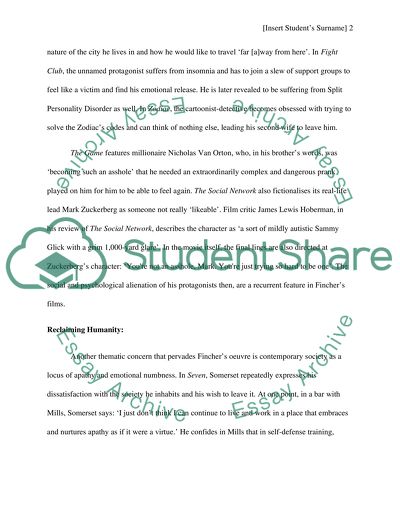Cite this document
(“The movie style of David Fincher Essay Example | Topics and Well Written Essays - 1500 words”, n.d.)
The movie style of David Fincher Essay Example | Topics and Well Written Essays - 1500 words. Retrieved from https://studentshare.org/miscellaneous/1584408-the-movie-style-of-david-fincher
The movie style of David Fincher Essay Example | Topics and Well Written Essays - 1500 words. Retrieved from https://studentshare.org/miscellaneous/1584408-the-movie-style-of-david-fincher
(The Movie Style of David Fincher Essay Example | Topics and Well Written Essays - 1500 Words)
The Movie Style of David Fincher Essay Example | Topics and Well Written Essays - 1500 Words. https://studentshare.org/miscellaneous/1584408-the-movie-style-of-david-fincher.
The Movie Style of David Fincher Essay Example | Topics and Well Written Essays - 1500 Words. https://studentshare.org/miscellaneous/1584408-the-movie-style-of-david-fincher.
“The Movie Style of David Fincher Essay Example | Topics and Well Written Essays - 1500 Words”, n.d. https://studentshare.org/miscellaneous/1584408-the-movie-style-of-david-fincher.


